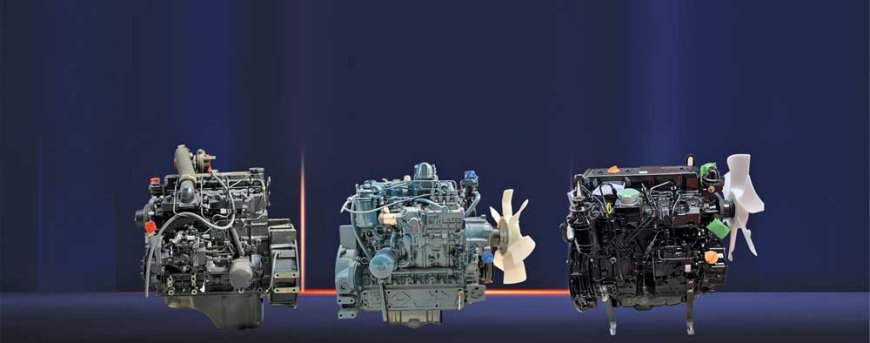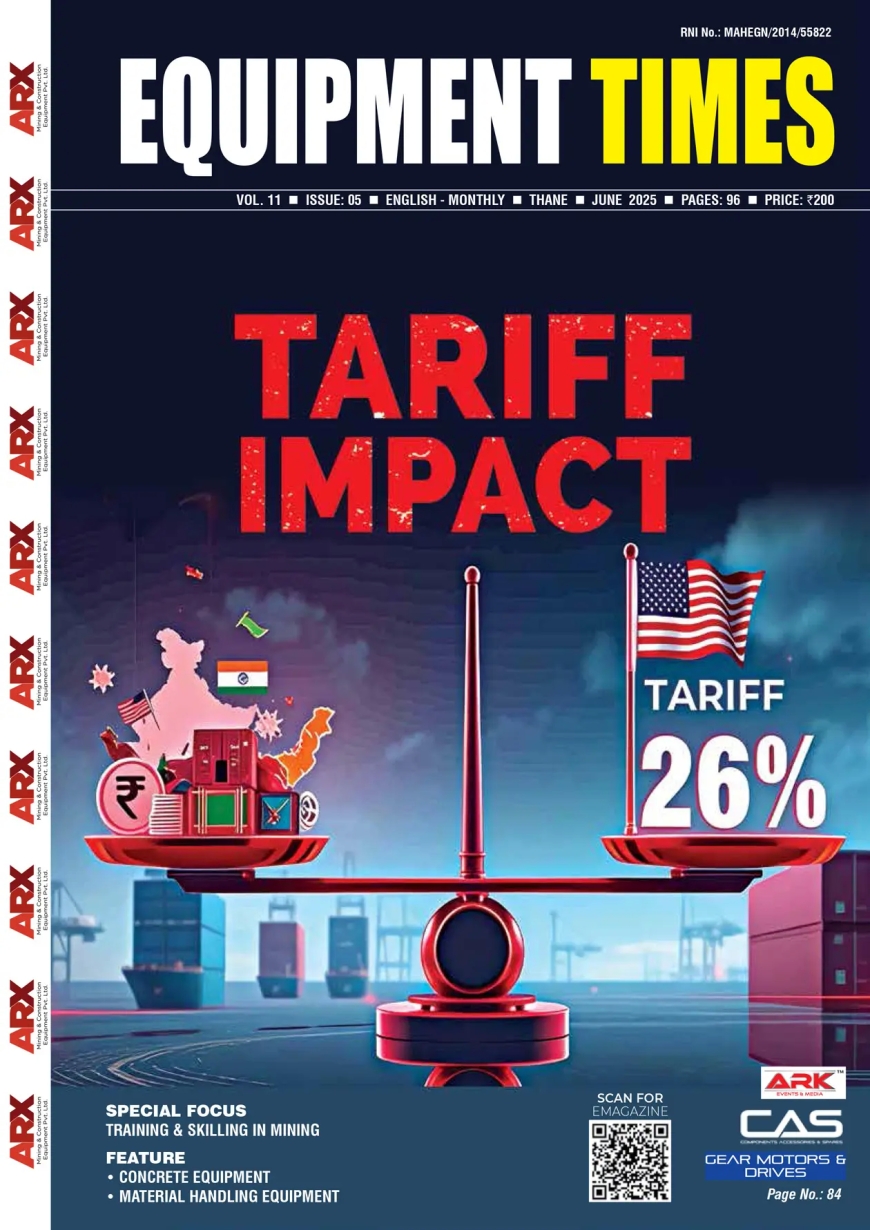Engineered for Strength!
Engines used in construction equipment are specifically designed to provide power, durability, and efficiency to handle the demanding requirements of construction sites. Equipment Timeslooks into the different types of the engines, reliability of your engines in demanding construction environments, after-sales

Engines used in construction equipment are specifically designed to provide power, durability, and efficiency to handle the demanding requirements of construction sites. Equipment Times looks into the different types of the engines, reliability of your engines in demanding construction environments, after-sales services, with environmental regulations and emissions standards, research and development, new technologies and challenges in the engine market.
The construction equipment engine market in India is driven by the country’s infrastructure development plans, urbanization, and increasing construction activities. With a focus on localized manufacturing, compliance with emission standards, and growing interest in alternative power sources, the market continues to evolve to meet the industry’s needs.
Engine Types
Diesel engines dominate the construction equipment sector in India. Diesel engines are preferred due to their high torque output, fuel efficiency, and suitability for heavy-duty applications. However, there is also growing interest in exploring alternative power sources, such as hybrid and electric powertrains, driven by environmental concerns and the need for sustainable construction practices.
Emission Standards
The Indian government has implemented emission standards for construction equipment engines to address environmental concerns and air pollution. The Bharat Stage (BS) emission standards regulate the permissible limits of pollutants emitted by engines. Currently, the country follows the BS-IV and BS-VI emission standards, with BS-VI being the latest and more stringent standard.
Engine manufacturers in India understand the unique requirements of the local market and offer engines tailored to Indian conditions. They develop engines that can handle high ambient temperatures, dusty environments, and varying fuel qualities commonly found in the country.
Aftermarket Support
The aftermarket segment for construction equipment engines is well-established in India. Engine manufacturers and authorized dealers provide comprehensive aftermarket support, including spare parts, service, and maintenance. This ensures smooth operations and efficient servicing of construction equipment engines throughout their lifecycle.
Government Initiatives
The Indian government has implemented various initiatives to promote the manufacturing and use of construction equipment in the country. This includes incentives for localized production, infrastructure investments, and policies promoting the use of advanced technology and environmentally friendly engines.
Key features of engines used in construction equipment
High Power Output: Construction equipment engines are designed to deliver high levels of power to perform heavy-duty tasks. They generate substantial torque to handle tough terrain, move heavy materials, and operate hydraulic systems.
Durability and Reliability: Construction equipment operates in harsh environments, including dusty, hot, and cold conditions. Engines for construction equipment are built to withstand these conditions and provide reliable performance over long hours of operation. They are constructed with robust components, reinforced bearings, and advanced cooling systems.
Fuel Efficiency: Construction projects often involve long hours of operation, making fuel efficiency a crucial factor. Engine manufacturers strive to optimize fuel consumption by incorporating advanced fuel injection systems, electronic controls, and improved combustion technologies to reduce emissions and maximize fuel economy.
Tier Compliance: Engines used in construction equipment must meet specific emission standards set by regulatory authorities. The most common standards are known as Tier regulations, which define permissible levels of pollutants. Engine manufacturers ensure compliance with these regulations, integrating technologies like exhaust aftertreatment systems and electronic engine controls to reduce emissions.
Adaptability: Construction equipment engines need to be adaptable to a wide range of machinery types and applications. They can power various equipment such as excavators, loaders, bulldozers, graders, cranes, and more. The engines are designed to accommodate different mounting configurations and can be customized to suit specific equipment requirements.
Serviceability: Construction equipment operates under demanding conditions and requires regular maintenance. Engine manufacturers focus on designing engines that are easily serviceable, with accessible components, clear maintenance points, and user-friendly diagnostic systems. This allows technicians to perform routine inspections, maintenance, and repairs efficiently.
Noise and Vibration Control: Construction sites can be noisy environments, and equipment operators and nearby workers may be exposed to high levels of noise and vibrations. Engine manufacturers work on reducing noise and vibration levels through the use of advanced engine mounts, noise-dampening materials, and improved engine design. This helps enhance operator comfort and minimize the impact on the surrounding environment.
These features collectively contribute to the overall performance, efficiency, and reliability of engines used in construction equipment, enabling them to handle the rigorous demands of construction sites.
Market
The construction equipment engine market in India has experienced significant growth in recent years. The government’s focus on infrastructure development, including initiatives like “Make in India” and the development of smart cities, has contributed to the increased demand for construction equipment and engines.
The market for engines used in construction equipment is significant and driven by the global construction industry’s demand for reliable and powerful machinery.
Growth and Demand: The construction equipment engine market has experienced steady growth in recent years due to infrastructure development projects, urbanization, and increasing construction activities worldwide. Emerging economies, such as China, India, and Southeast Asian countries, have been major contributors to the growing demand for construction equipment engines.
Construction Industry Trends: The construction industry is evolving with technological advancements and the increasing focus on sustainability. This has led to a demand for more efficient, low-emission engines that comply with stringent environmental regulations, such as emission standards like Tier 4 Final in North America and Stage V in Europe.
Equipment Types: Construction equipment engines are used in a wide range of machinery, including excavators, loaders, bulldozers, graders, cranes, compactors, and more. Each equipment type has specific engine requirements based on power output, torque, size, and other factors.
OEMs and Engine Manufacturers: Original Equipment Manufacturers (OEMs) play a significant role in the construction equipment engine market. They collaborate with engine manufacturers to provide
integrated solutions, ensuring the compatibility and optimal performance of engines with their equipment. Prominent engine manufacturers in the construction equipment sector include Caterpillar, Cummins, Deutz, Volvo Penta, Perkins, Yanmar, and Kubota, among others.
Regional Markets: The market for construction equipment engines is globally distributed, with different regions exhibiting varying levels of demand. Developing regions, such as Asia-Pacific and Latin America, have been experiencing rapid urbanization and infrastructure development, leading to increased demand for construction equipment engines.
Hits: 10








